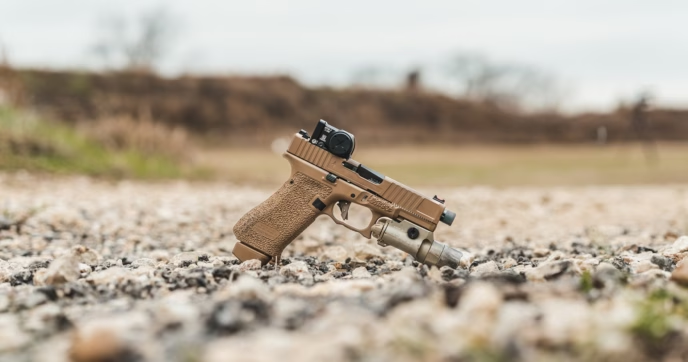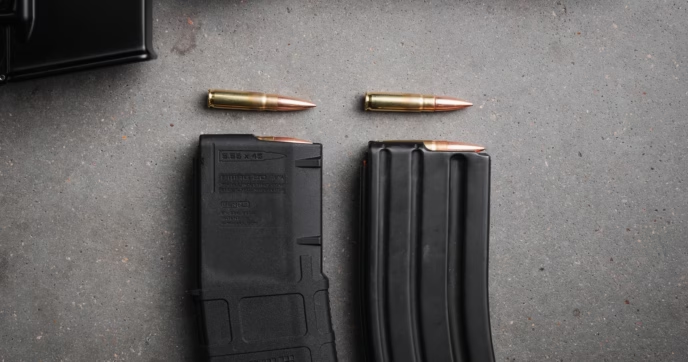In the United States, firearms are used for a wide array of purposes, including personal/home defense, hunting, competitions, and recreation. Because of their popularity, there are hundreds of different manufacturers producing handguns, rifles, and even shotguns, and this variety has made it easy for enthusiasts to find models that fit their needs.
However, regardless of whether you’re new to owning guns, or if you’ve been around them your entire life, the importance of gun safety cannot be stressed enough.

Understanding Gun Safety
Gun safety is the practice of being safe when handling, storing, or using firearms. Every firearm owner is responsible for making safe decisions with their firearms, whether at the range or inside the home. Despite the obvious and severe risks of mishandling firearms, safety is still overlooked more often than you may think.
In many cases, the violators are experienced gun-owners who have simply gotten too casual with their firearms and adopted poor safety habits from overconfidence. This can be as simple as forgetting to check the chamber before disassembling a pistol, but the repercussions of even a single mistake can be immeasurable.
However, by adopting and adhering to gun safety measures, that risk can be greatly reduced. No matter what type of gun you own, it’s crucial to follow these four universal rules of gun safety:

Four Rules of Gun Safety
1. Treat every firearm as if it is loaded: Even if you know that a gun isn’t loaded, it’s still important for you to keep practicing proper firearm etiquette by treating it as if it was. Doing so is good for practicing the fundamentals of firearm safety, which can be further reinforced by dry fire training.
2. Always keep your muzzle pointed in a safe direction: Whether loaded or not, it’s important to keep your gun pointed in a safe direction. If you’re moving with a firearm, ensure it’s either unloaded or on safe, and keep the muzzle pointed either down range or at the ground.
Also, remember that just because there’s a wall, doesn’t mean it’s a safe direction. Most interior (and many exterior) walls will not stop a bullet, meaning that you should always remain cognizant of what might be behind that surface.
3. Keep your finger off the trigger until you are ready to fire: Accidents like a negligent discharge (ND) often occur when someone rests their finger on the trigger. Until you’ve properly identified your target and what’s around it, don’t touch the trigger.
4. Be sure of your target AND what is beyond it when shooting: Unless you can clearly see your target and what’s around and beyond it, do not fire. Over-penetration should be a serious consideration—especially when using powerful rifle cartridges. Unless you have a firm backstop, you need to consider what might be beyond your target before you pull the trigger.
Following these rules lowers the chances of having a firearm-related accident. Still, it’s good to have some other safety measures in place, such as secure storage and first aid prep.
Implementing Firearm Safety Measures
In terms of safety measures, there’s a lot you can do to make your home safer when you’re a gun owner, ranging from proper storage to having a high quality first aid kit on hand.

Storing you Firearm(s)
Having proper storage for your firearms is crucial. It keeps them out of the reach of those who may not know how to use them and protects your guns from being damaged. Many firearms come with a padded case to protect their finish, while keeping it from being exposed to moisture and rust. For some added security, you can opt for a lockable gun case. Usually made of a more rigid polymer, they offer a similar degree of protection for your guns, and they easily be locked with a gun lock. No matter which one you go with, they can each be stored under your bed or in a closet.
For those with multiple firearms, a long-term storage choice like a gun safe could be a better option. Gun safes are available in multiple sizes, allowing you to store a multitude of different firearms, ranging from handguns to full length rifles. They have a larger storage capacity and offer much more security for your firearms, coming with mechanical or electric locks that require a code. Safes also tend to be harder to steal from in the case of a break-in, while a light, locked case is likely to be taken in the case of a burglary.

Holsters
The rules around conceal carry vary from state-to state with some requiring enthusiasts to have permit or other paperwork. If you can carry a firearm on your person, it’s crucial to have a good holster to go along with your pistol.
There are multiple holster types available, such as inside the waistband (IWB) and outside the waistband (OWB) holsters. By far, the most common holster to use for concealed carry are IWB holsters. They bring the pistol closer to your body, making it easier to conceal. OWB holsters, as their name suggests, sit on the outside of your waistband. Because of this, it’s difficult to properly conceal your pistol unless you’re wearing multiple layers. For concealed carry, IWB is the way to go.
Regardless of which one you choose, ensuring the quality of your holster is paramount to your safety and security when carrying your pistol. Ideally, you want your holster to be made of quality materials and have good retention. Holsters from reputable brands such as Tier1 Concealed, LAS Concealment, and Safariland are among the most popular, but keep in mind that there are many brands making quality holsters. Our holster guide goes more in-depth on what to look for when choosing one.
Personal Protective Equipment and First Aid
Anytime you’re out shooting, you need to protect your eyes and ears. A good pair of eyewear like safety glasses will protect your eyes from ejected shell casings, debris from targets like shooting clays, and they keep you safe from catastrophic malfunctions, in the rare event that they occur.
Hearing protection, like ear plugs and earmuffs, dampens the sound put off by firing a gun. The sound signature of guns is loud and can permanently damage your hearing, even if it doesn’t feel painful. Certain guns can be hearing safe when using a suppressor, but that is often limited to select calibers and ammo loads; even then, hearing protection is still recommended.
In addition to having good PPE, it’s also a good idea to have a first aid kit or first aid supplies close by or in an emergency car kit. Even when you have safety measures in place, accidents can still happen and it’s best to be prepared for them. Depending on which kit you look at, they may come with different contents. A professional-grade kit will have a tourniquet (preferably a CAT), pressure bandages, chest seals, gauze, and trauma shears. All these components can be bought individually, too.
When it comes to first aid, there is a lot to cover; and our guide on gun range first aid kits details the basics of what you need to know. Regardless, we highly recommend that any firearms enthusiast enroll in some kind of tactical medicine or trauma course, as training will always be the most important factor in first aid.
Enhancing your Gun Safety Knowledge
Expanding your gun safety knowledge is crucial. Numerous resources are available to help further your knowledge with practical experience. For example, signing up for your local range’s safety course or completing online classes like the Texas Online Gun Safety Training Course and those offered by the NRA are a good place to start. You can also use this knowledge to teach others how to be safe with firearms, giving them a solid foundation to start building their skills on.

Conclusion
Safety is the most critical component of responsible firearm ownership. While following the basic rules of gun safety may seem obvious, it’s important to consciously adopt these rules whenever you handle a firearm. Many negligent discharges are the result of getting too comfortable with guns, leading to overconfidence and laxity towards the four main rules.
Regardless of whether you’re new to owning guns, or if you’re an experienced enthusiast, you are responsible for upholding the firearm safety rules. Remember to always check to see if there are any added state or local laws that you need to follow as well.
If you are just getting into firearms ownership and are considering what’s safe and effective, we have more resources for you. Check out our guide on using guns for self-defense, which breaks down the different firearms available, safety tips, and diverse ways to train.




